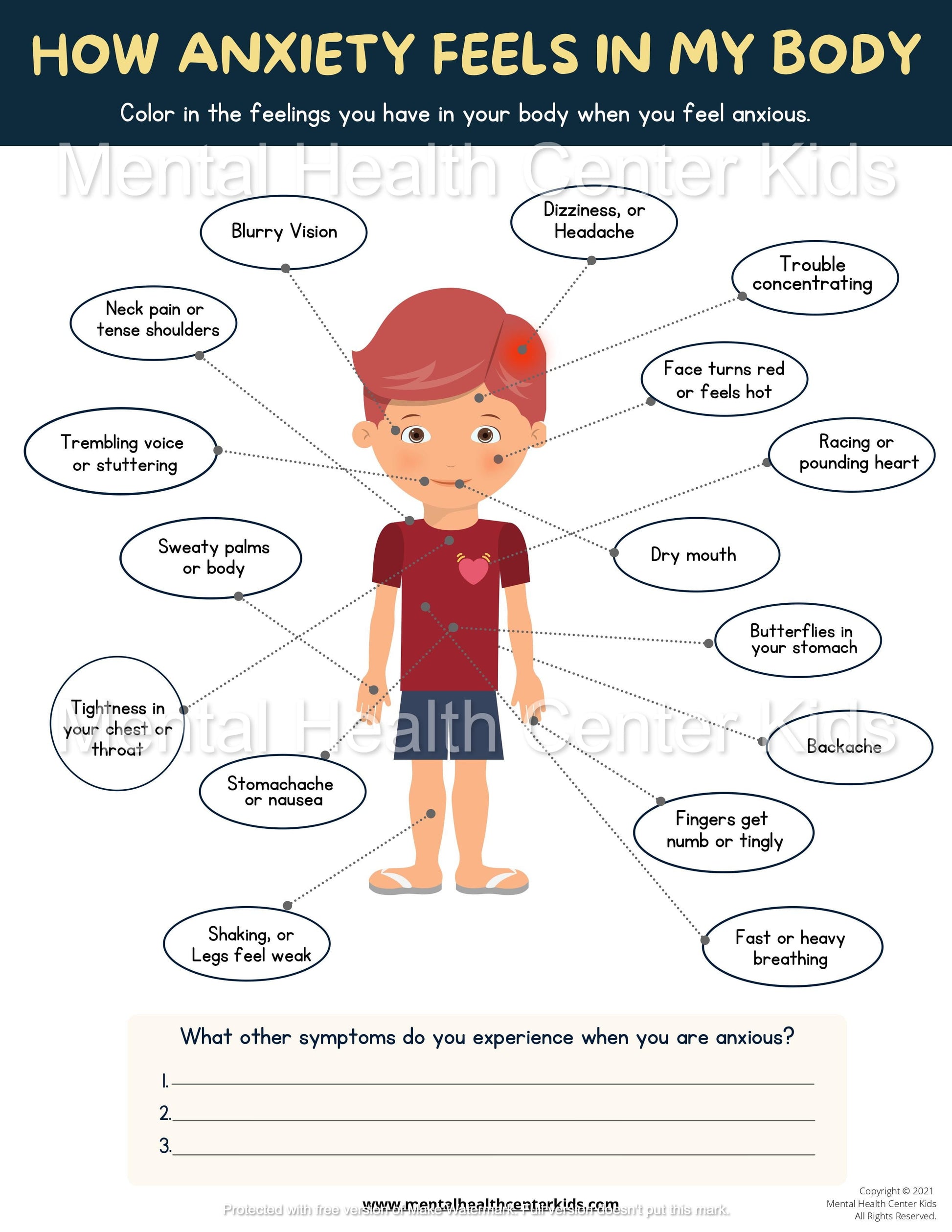Physical Symptoms of Anxiety



Physical symptoms of anxiety refer to the bodily sensations or reactions that someone may feel when facing stressful or anxious situations. In kids, this can show up as behaviors like nail biting, stomachaches, or fidgeting. Sometimes, kids can be so caught up in these feelings that they don't even notice they are anxious.
The Physical Symptoms of Anxiety worksheet is a helpful exercise that allows kids to identify what they feel in their body when they are anxious and recognize them as early warning signs of their emotional state. It shows a child with different body parts and how each part might feel during anxiety. Kids can color the circles with relevant symptoms and write down any other symptoms they have in the blanks below.
Besides noticing early signs, using this worksheet helps kids become aware of and avoid potential long-term effects, such as chronic stress or disruptions in their daily lives. For example, a child who recognizes stomachaches as one of their symptoms can learn to use relaxation techniques.
To take care of themselves, kids can set aside a few minutes each day to take a deep breath and notice how their body feels. They can also create a "feelings check-in" routine using the Anxiety Self-Care Checklist.
Want more resources like this? Check out our full catalog of anxiety worksheets and handouts.
References:
- Manassis, K., Avery, D., Butalia, S., & Mendlowitz, S. (2004). Cognitive-behavioral therapy with childhood anxiety disorders: Functioning in adolescence. Depression and Anxiety, 19(4), 209-216. https://doi.org/10.1002/da.10133
- Rockhill, C., Kodish, I., DiBattisto, C., Macias, M., Varley, C., & Ryan, S. (2010). Anxiety disorders in children and adolescents. Current Problems in Pediatric and Adolescent Health Care, 40(4), 66-99.
- Spence, S. H. (1998). undefined. Behaviour Research and Therapy, 36(5), 545-566. https://doi.org/10.1016/s0005-7967(98)00034-5
- Instant digital download
- File: Fillable PDF
- Size: 8.5" x 11"
Useful psychoeducation for older school-age children. Younger children might get lost in the verbiage. A nice complete list of body symptomology for anxiety.




